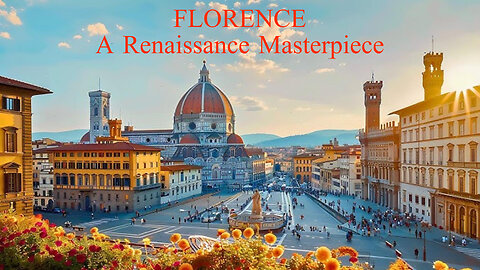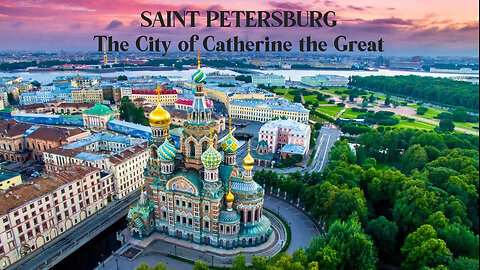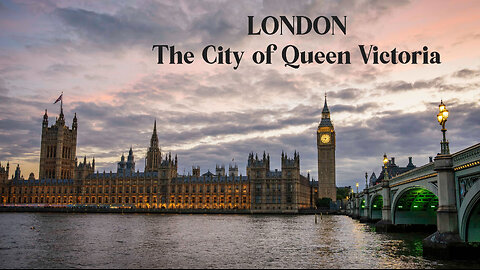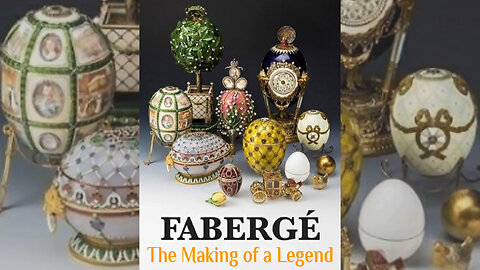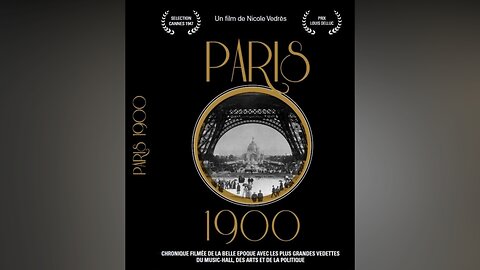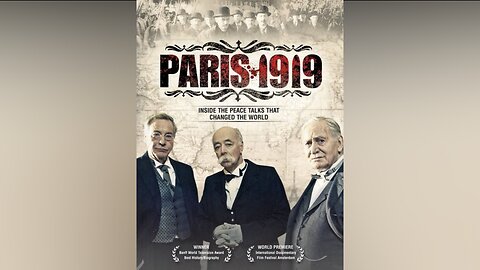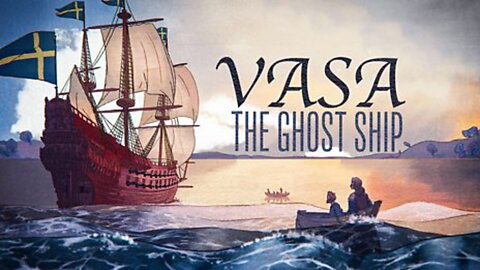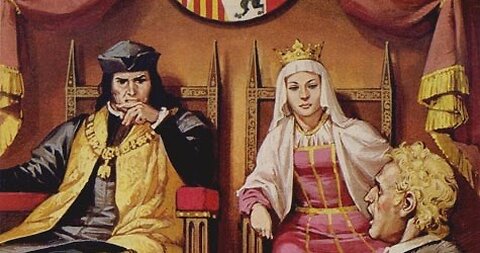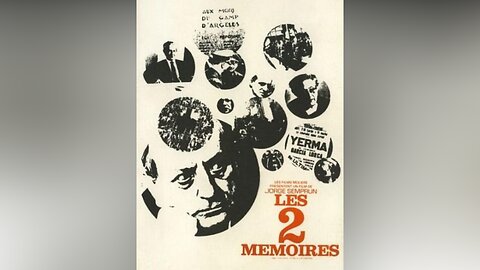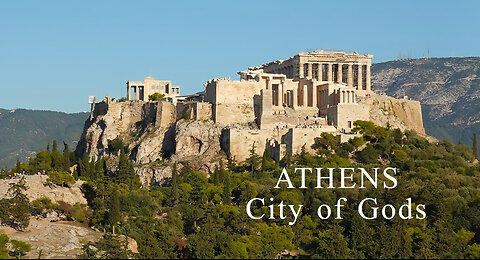
-
Legendary Cities | Athens: City of Gods (Episode 1)
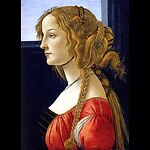 Adaneth - History&PoliticsA 2014 Documentary series looking at the most beautiful cities in the world. These majestic cities share much in common: artistic history, stunning architecture and a rich historic, cultural and literary heritage. Each episode is a journey to the heart of one legendary city. We immerse ourselves in their golden age, profiling these cities from inside out. Episode 1: Athens stands as a testament to ancient Greek ingenuity and cultural brilliance. As the cradle of democracy, it introduced revolutionary ideas that shaped the modern world. The Acropolis, crowned by the majestic Parthenon, symbolizes the zenith of classical architecture. The Agora, bustling with philosophers and statesmen, was the heart of civic life. Temples dedicated to gods like Athena and Zeus adorned the city, showcasing architectural prowess. The legacy of Athens is immortalized in its contributions to philosophy, arts, and governance. This documentary offers an immersive journey into the city's illustrious past. Witness the enduring spirit of Athens, where history and myth intertwine. Episode 2: https://rumble.com/v6vii2p-legendary-cities-florence-a-renaissance-masterpiece-episode-2.html Note: I don't have the complete series.93 views
Adaneth - History&PoliticsA 2014 Documentary series looking at the most beautiful cities in the world. These majestic cities share much in common: artistic history, stunning architecture and a rich historic, cultural and literary heritage. Each episode is a journey to the heart of one legendary city. We immerse ourselves in their golden age, profiling these cities from inside out. Episode 1: Athens stands as a testament to ancient Greek ingenuity and cultural brilliance. As the cradle of democracy, it introduced revolutionary ideas that shaped the modern world. The Acropolis, crowned by the majestic Parthenon, symbolizes the zenith of classical architecture. The Agora, bustling with philosophers and statesmen, was the heart of civic life. Temples dedicated to gods like Athena and Zeus adorned the city, showcasing architectural prowess. The legacy of Athens is immortalized in its contributions to philosophy, arts, and governance. This documentary offers an immersive journey into the city's illustrious past. Witness the enduring spirit of Athens, where history and myth intertwine. Episode 2: https://rumble.com/v6vii2p-legendary-cities-florence-a-renaissance-masterpiece-episode-2.html Note: I don't have the complete series.93 views -
Legendary Cities | Florence: A Renaissance Masterpiece (Episode 2)
 Adaneth - History&PoliticsEpisode 2: We delve into the rich history and architectural splendor of Florence, the birthplace of the Renaissance. The powerful Medici family, eager to showcase their influence, invested heavily in art, palaces, squares, and religious monuments. Their patronage transformed Florence into one of the most stunning cities of the 15th century. The city's beauty and grandeur were shaped by the Renaissance spirit, leaving a lasting legacy of artistic and architectural masterpieces that continue to awe the world today. Florence remains a symbol of cultural rebirth and artistic excellence. Episode 3: https://rumble.com/v6viikx-legendary-cities-st.-petersburg-the-city-of-catherine-the-great-episode-3.html119 views
Adaneth - History&PoliticsEpisode 2: We delve into the rich history and architectural splendor of Florence, the birthplace of the Renaissance. The powerful Medici family, eager to showcase their influence, invested heavily in art, palaces, squares, and religious monuments. Their patronage transformed Florence into one of the most stunning cities of the 15th century. The city's beauty and grandeur were shaped by the Renaissance spirit, leaving a lasting legacy of artistic and architectural masterpieces that continue to awe the world today. Florence remains a symbol of cultural rebirth and artistic excellence. Episode 3: https://rumble.com/v6viikx-legendary-cities-st.-petersburg-the-city-of-catherine-the-great-episode-3.html119 views -
Legendary Cities | St. Petersburg: The City of Catherine the Great (Episode 3)
 Adaneth - History&PoliticsEpisode 4: https://rumble.com/v6vin77-legendary-cities-london-the-city-of-queen-victoria-episode-4.html85 views
Adaneth - History&PoliticsEpisode 4: https://rumble.com/v6vin77-legendary-cities-london-the-city-of-queen-victoria-episode-4.html85 views -
Legendary Cities | London: The City of Queen Victoria (Episode 4)
 Adaneth - History&PoliticsEpisode 4: Queen Victoria very much made her mark on England and especially London for example imposing St Pancras Station, of which she was very proud. The British capital is full of charm and history, come with us as we discover its secrets.101 views
Adaneth - History&PoliticsEpisode 4: Queen Victoria very much made her mark on England and especially London for example imposing St Pancras Station, of which she was very proud. The British capital is full of charm and history, come with us as we discover its secrets.101 views -
Fabergé: The Making of a Legend
 Adaneth - History&PoliticsA 2021 ARTE France Documentary, written and Directed by Jean-Pierre Cottet, narrated by Lexie Kendrick. For over a century, the name Fabergé has evoked the world's most extravagant Easter eggs. Today, the Imperial Eggs, as they came to be called, continue to enjoy an unmatched position in the history of the decorative arts. But the work of Fabergé goes well beyond that. Miniature animal sculptures, clocks, cigarette cases, theater binoculars... relying on the rich creativity of his brother Agathon and on a network of talented suppliers, workshop managers and subcontractors, Carl Fabergé gave birth to a magical world and revolutionized jewelry. He designed a range of other work of high quality and intricate details, that took the art world by storm, provoking the passion of thousands of collectors across the planet. Fabergé broke the codes of traditional jewellery and created an exceptional industry. This film immerses us into the incredible universe the House of Faberge invented. Above the eggs, it retraces the destiny of the Faberge Clan, and explores its entire work. An exceptional human adventure that took place in a declining Russian Empire about to be swept away by the revolution. The path of the Russian Fabergé family of jewelers from Saint Petersburg reflects the history of the Russian Empire from the mid-19th century to the fall of the tsarist rule in the course of the revolutionary upheavals of 1917. In 1872, the Russian goldsmith and jeweler Peter Carl Fabergé took over his father Gustav's prosperous jewelery shop in Saint Petersburg and made it world-famous. With his outstanding creations, Fabergé fulfilled the luxury needs of the elite, who were completely isolated from the starving people. After Alexander III become aware of Faberge in 1882, he turned into court jeweler to the Tsar and later to his son Nicholas II. The Romanovs' passion for his jewelery and decorative objects ensured him unparalleled prosperity and artistic freedom. The trigger was his legendary surprise egg made of enamel, gold and ruby, with which Alexander III delighted his wife Maria Fyodorovna at Easter 1885. Until the revolution, more imperial Easter eggs followed almost every year, ever more valuable and original than the other. But these eggs are only a tiny part of Fabergé's oeuvre. In fact, he founded an industry of valuable jewelry objects that immediately aroused the passion of collectors. These exquisitely tasteful, brightly coloured, sometimes stylistically bold pieces of jewelery served the tsar's family as gifts to foreign dignitaries on their travels. Fabergé supplied the Queen and other crowned heads of Europe as well as the kings of Siam. For the families of the aristocracy and the rising industrial bourgeoisie in Russia, Fabergé's talismans, fetishes and jewels were real objects of desire, with which they could feel like little tsars. Powered by his conviction that the value of a painting is not measured by its price, Fabergé elevated the jeweller's craft to an art and the craftsman to the artist.78 views
Adaneth - History&PoliticsA 2021 ARTE France Documentary, written and Directed by Jean-Pierre Cottet, narrated by Lexie Kendrick. For over a century, the name Fabergé has evoked the world's most extravagant Easter eggs. Today, the Imperial Eggs, as they came to be called, continue to enjoy an unmatched position in the history of the decorative arts. But the work of Fabergé goes well beyond that. Miniature animal sculptures, clocks, cigarette cases, theater binoculars... relying on the rich creativity of his brother Agathon and on a network of talented suppliers, workshop managers and subcontractors, Carl Fabergé gave birth to a magical world and revolutionized jewelry. He designed a range of other work of high quality and intricate details, that took the art world by storm, provoking the passion of thousands of collectors across the planet. Fabergé broke the codes of traditional jewellery and created an exceptional industry. This film immerses us into the incredible universe the House of Faberge invented. Above the eggs, it retraces the destiny of the Faberge Clan, and explores its entire work. An exceptional human adventure that took place in a declining Russian Empire about to be swept away by the revolution. The path of the Russian Fabergé family of jewelers from Saint Petersburg reflects the history of the Russian Empire from the mid-19th century to the fall of the tsarist rule in the course of the revolutionary upheavals of 1917. In 1872, the Russian goldsmith and jeweler Peter Carl Fabergé took over his father Gustav's prosperous jewelery shop in Saint Petersburg and made it world-famous. With his outstanding creations, Fabergé fulfilled the luxury needs of the elite, who were completely isolated from the starving people. After Alexander III become aware of Faberge in 1882, he turned into court jeweler to the Tsar and later to his son Nicholas II. The Romanovs' passion for his jewelery and decorative objects ensured him unparalleled prosperity and artistic freedom. The trigger was his legendary surprise egg made of enamel, gold and ruby, with which Alexander III delighted his wife Maria Fyodorovna at Easter 1885. Until the revolution, more imperial Easter eggs followed almost every year, ever more valuable and original than the other. But these eggs are only a tiny part of Fabergé's oeuvre. In fact, he founded an industry of valuable jewelry objects that immediately aroused the passion of collectors. These exquisitely tasteful, brightly coloured, sometimes stylistically bold pieces of jewelery served the tsar's family as gifts to foreign dignitaries on their travels. Fabergé supplied the Queen and other crowned heads of Europe as well as the kings of Siam. For the families of the aristocracy and the rising industrial bourgeoisie in Russia, Fabergé's talismans, fetishes and jewels were real objects of desire, with which they could feel like little tsars. Powered by his conviction that the value of a painting is not measured by its price, Fabergé elevated the jeweller's craft to an art and the craftsman to the artist.78 views -
Paris 1900: A Chronicle from 1900 to 1914
 Adaneth - History&PoliticsA 1987 Documentary Film by Nicole Védrès. Audio in French with English subtitles. Documentary limning the life of Paris and its citizens during "La Belle Epoque," the years between 1900 and 1914. Beginning with the Paris Exposition of 1900 and the completion of the Eiffel Tower, the film progresses through cultural, technological, and social changes, from peaceful and sometimes naive times to the rumbling foreshadowing of the war that would disrupt France and Europe for years to come.124 views 1 comment
Adaneth - History&PoliticsA 1987 Documentary Film by Nicole Védrès. Audio in French with English subtitles. Documentary limning the life of Paris and its citizens during "La Belle Epoque," the years between 1900 and 1914. Beginning with the Paris Exposition of 1900 and the completion of the Eiffel Tower, the film progresses through cultural, technological, and social changes, from peaceful and sometimes naive times to the rumbling foreshadowing of the war that would disrupt France and Europe for years to come.124 views 1 comment -
Paris 1919
 Adaneth - History&PoliticsA 2008 NFB History Docu-drama narrated by Robert Holmes Thomson. How can you make peace when what you really want is revenge? In the wake of 37 million casualties at the end of World War I, President Woodrow Wilson took his dream of a League of Nations to Paris to seek "peace everlasting," joining over 30 international delegations who descended upon the great city for the most ambitious peace talks in history. Helmed by the Big Four (the United States, France, Great Britain, and Italy), the Paris Peace Conference ultimately and ironically sowed the seeds of resentment that led to World War II. Director Paul Cowan expertly blends re-enactments with archival footage to transport us to one of the most important summit meetings of the 20th Century. Inspired by the award-winning bestseller by Margaret MacMillan, Paris 1919 chronicles an extraordinary historical event that dissolved empires, redrew maps, engineered the Treaty of Versailles - and created far-reaching consequences that continue to afflict and trouble our world today.148 views
Adaneth - History&PoliticsA 2008 NFB History Docu-drama narrated by Robert Holmes Thomson. How can you make peace when what you really want is revenge? In the wake of 37 million casualties at the end of World War I, President Woodrow Wilson took his dream of a League of Nations to Paris to seek "peace everlasting," joining over 30 international delegations who descended upon the great city for the most ambitious peace talks in history. Helmed by the Big Four (the United States, France, Great Britain, and Italy), the Paris Peace Conference ultimately and ironically sowed the seeds of resentment that led to World War II. Director Paul Cowan expertly blends re-enactments with archival footage to transport us to one of the most important summit meetings of the 20th Century. Inspired by the award-winning bestseller by Margaret MacMillan, Paris 1919 chronicles an extraordinary historical event that dissolved empires, redrew maps, engineered the Treaty of Versailles - and created far-reaching consequences that continue to afflict and trouble our world today.148 views -
Vasa: The Ghost Ship
 Adaneth - History&PoliticsA 2024 History Documentary. The Vasa, one of the most majestic galleons ever to put to sea, sank 18 minutes after leaving Stockholm harbour on her maiden voyage in 1628. The loss of the Vasa was a major setback for Sweden’s ambitions to become a power in the Baltic during a turbulent period of European history. Three centuries later, in 1961, the wreck of the Vasa was raised. Remarkably well preserved by the mud and water in the Baltic Sea, she is a 17th-century time machine. Following the work of archaeologists, divers and historians, this programme plunges into Stockholm harbour to make new discoveries and reveal more about the lives of those who built, sailed and died on one of the most powerfully armed warships of her time.172 views
Adaneth - History&PoliticsA 2024 History Documentary. The Vasa, one of the most majestic galleons ever to put to sea, sank 18 minutes after leaving Stockholm harbour on her maiden voyage in 1628. The loss of the Vasa was a major setback for Sweden’s ambitions to become a power in the Baltic during a turbulent period of European history. Three centuries later, in 1961, the wreck of the Vasa was raised. Remarkably well preserved by the mud and water in the Baltic Sea, she is a 17th-century time machine. Following the work of archaeologists, divers and historians, this programme plunges into Stockholm harbour to make new discoveries and reveal more about the lives of those who built, sailed and died on one of the most powerfully armed warships of her time.172 views -
Ferdinand V and Isabella: Spanish Monarchs
 Adaneth - History&PoliticsFerdinand (1452–1516) and Isabella (1451–1504) united Castile and Aragon creating modern Spain under a dual monarchy. Ferdinand was born at Sos, Aragon, on March 19, 1452, as the son of John II of Aragon and Navarre (1397–1479) and Juana Enriquez, his second wife. As heir to the throne of Aragon, Ferdinand became king of Sicily in 1468. He was skillful, ruthless, ambitious, self-centered, and political in all his endeavors. Ferdinand married his equally ambitious, pious, but wiser cousin Isabella of Castile and León. She was born at Madrigal de las Torres in Castile on April 22, 1451, the daughter of feeble-minded King John II of Castile and León (1405–54) and Isabelle of Portugal, his strongminded second wife. She inherited an extensive royal lineage from several generations of European dynasties. The couple maintained exceptionally close ties to the papacy. When Ferdinand’s father died in 1479, Ferdinand and Isabella’s union merged the two largest kingdoms of the Iberian Peninsula and created 90 percent of present-day Spain. The astute Isabella insisted that there be joint rule and that she govern Castile herself. The saying “Tanto monta, monta tanto” (They are one and the same), became their motto. Isabella also insisted that both their names be placed on each royal document and that she preside at each state transaction. She also allowed their coat of arms to be united. The couple had five children: Isabella of Aragon (1470–98), Juan of Aragon (1478–97), Juana of Castile (1479–1551), Maria of Aragon (1482–1517), and Catherine of Aragon (1485–1536).106 views
Adaneth - History&PoliticsFerdinand (1452–1516) and Isabella (1451–1504) united Castile and Aragon creating modern Spain under a dual monarchy. Ferdinand was born at Sos, Aragon, on March 19, 1452, as the son of John II of Aragon and Navarre (1397–1479) and Juana Enriquez, his second wife. As heir to the throne of Aragon, Ferdinand became king of Sicily in 1468. He was skillful, ruthless, ambitious, self-centered, and political in all his endeavors. Ferdinand married his equally ambitious, pious, but wiser cousin Isabella of Castile and León. She was born at Madrigal de las Torres in Castile on April 22, 1451, the daughter of feeble-minded King John II of Castile and León (1405–54) and Isabelle of Portugal, his strongminded second wife. She inherited an extensive royal lineage from several generations of European dynasties. The couple maintained exceptionally close ties to the papacy. When Ferdinand’s father died in 1479, Ferdinand and Isabella’s union merged the two largest kingdoms of the Iberian Peninsula and created 90 percent of present-day Spain. The astute Isabella insisted that there be joint rule and that she govern Castile herself. The saying “Tanto monta, monta tanto” (They are one and the same), became their motto. Isabella also insisted that both their names be placed on each royal document and that she preside at each state transaction. She also allowed their coat of arms to be united. The couple had five children: Isabella of Aragon (1470–98), Juan of Aragon (1478–97), Juana of Castile (1479–1551), Maria of Aragon (1482–1517), and Catherine of Aragon (1485–1536).106 views -
Les Deux mémoires/The Two Memories (Jorge Semprún, 1972 - ENG & ESP SUB)
 Adaneth - History&PoliticsLes Deux mémoires (English: The Two Memories) is a 1972 Documentary Film by Jorge Semprún. Audio in French (mostly) and Spanish, with English and Spanish subtitles (click on CC for subtitles). The Two Memories , "an investigation into Republican and Francoist memories", in the words of Jorge Semprún, is built around interviews conducted in 1972 in France and Spain, archive images of the Civil War and news from the Francoist period. The documentary is divided into five chapters: 1. February 1939. The exile begins; 2. July 1936. War and revolution in Spain; 3. 1931-1935. The Bourgeois Republic. Origins of the Civil War; 4. Soviet aid to Republican Spain; 5. March 1939. The Spanish Civil War is over. With the testimonies of Federica Montseny (leader of the CNT, anarchist), Santiago Carrillo (general secretary of the PCE, communist), José Peirats (leader of the CNT), Maria Casarès (actress), Gabriel Jackson (historian), Fernando Claudín ( former secretary of the PCE), José María Gil-Robles (former leader of the CEDA, conservative), Lucio Losa (former activist of the JSU, left), José Menese ( flamenco cantaor ), Ian Gibson (writer and teacher), Wilebaldo Solano (leader of the POUM, Marxist), Juan Andrade (leader of the POUM), Manuel de Irujo (advisor to the Basque government in exile), Juan Goytisolo (novelist), Núria Espert (actress), José Martin Artajo (writer), André Malraux (writer), Lucy Durán (musicologist), Carmen Claudín (student), Simón Sanchez Montero (leader of the PCE), Dionisio Ridruejo (writer, former leader of the Spanish Phalange), Xavier Domingo (writer), the abbot of Montserrat, Raimon (singer), Yves Montand (actor). Film restored in 2010 by the Filmoteca de Catalunya, the Filmoteca Española and the Cinémathèque Française with the support of Jorge Semprún from the original elements preserved by the LTC laboratory. The analysis of these elements and a copy preserved at the Cinémathèque Française made it possible to reconstruct a version faithful to the one that had been discovered in theaters by the French public in 1974. This new print was produced in 2012 by the Éclair laboratory.85 views
Adaneth - History&PoliticsLes Deux mémoires (English: The Two Memories) is a 1972 Documentary Film by Jorge Semprún. Audio in French (mostly) and Spanish, with English and Spanish subtitles (click on CC for subtitles). The Two Memories , "an investigation into Republican and Francoist memories", in the words of Jorge Semprún, is built around interviews conducted in 1972 in France and Spain, archive images of the Civil War and news from the Francoist period. The documentary is divided into five chapters: 1. February 1939. The exile begins; 2. July 1936. War and revolution in Spain; 3. 1931-1935. The Bourgeois Republic. Origins of the Civil War; 4. Soviet aid to Republican Spain; 5. March 1939. The Spanish Civil War is over. With the testimonies of Federica Montseny (leader of the CNT, anarchist), Santiago Carrillo (general secretary of the PCE, communist), José Peirats (leader of the CNT), Maria Casarès (actress), Gabriel Jackson (historian), Fernando Claudín ( former secretary of the PCE), José María Gil-Robles (former leader of the CEDA, conservative), Lucio Losa (former activist of the JSU, left), José Menese ( flamenco cantaor ), Ian Gibson (writer and teacher), Wilebaldo Solano (leader of the POUM, Marxist), Juan Andrade (leader of the POUM), Manuel de Irujo (advisor to the Basque government in exile), Juan Goytisolo (novelist), Núria Espert (actress), José Martin Artajo (writer), André Malraux (writer), Lucy Durán (musicologist), Carmen Claudín (student), Simón Sanchez Montero (leader of the PCE), Dionisio Ridruejo (writer, former leader of the Spanish Phalange), Xavier Domingo (writer), the abbot of Montserrat, Raimon (singer), Yves Montand (actor). Film restored in 2010 by the Filmoteca de Catalunya, the Filmoteca Española and the Cinémathèque Française with the support of Jorge Semprún from the original elements preserved by the LTC laboratory. The analysis of these elements and a copy preserved at the Cinémathèque Française made it possible to reconstruct a version faithful to the one that had been discovered in theaters by the French public in 1974. This new print was produced in 2012 by the Éclair laboratory.85 views
